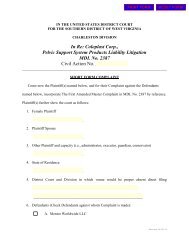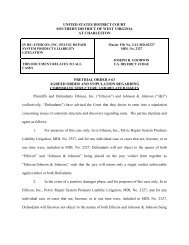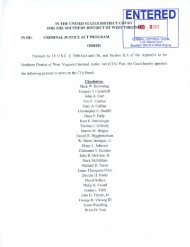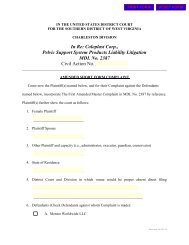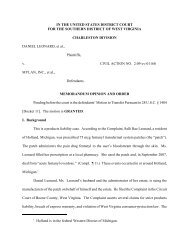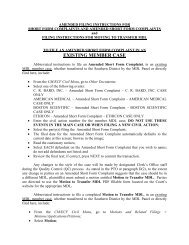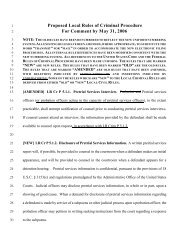R:\Storage\AE\Chapman, Ronald (C)\Order denying motion to ...
R:\Storage\AE\Chapman, Ronald (C)\Order denying motion to ...
R:\Storage\AE\Chapman, Ronald (C)\Order denying motion to ...
You also want an ePaper? Increase the reach of your titles
YUMPU automatically turns print PDFs into web optimized ePapers that Google loves.
proceeded on the assumption that the laws of the several states were such that court orders, issuedafter notice and hearing, should not embrace the prohibitions of paragraph (C)(ii) unless such eitherwere not contested or evidence credited by the court reflected a real threat or danger of injury <strong>to</strong> theprotected party by the party enjoined.” Id. at 262.This Court disagrees with the defendant, and considering the balancing of fac<strong>to</strong>rs enunciatedin Matthews v. Eldridge, finds that the defendant has and will receive the process he is due. TheDVPO at issue here explicitly contained the prohibition required by § 922(g)(8)(C)(ii) and the sameCongressional intent discerned in Emerson is applicable here – that a court cannot make prohibitionlisted in § 922(g)(8)(C)(ii) unless those prohibitions were not contested or the court finds that thereis a real threat of danger. While the order did not set forth an express finding or facts supporting afinding that the victim/petitioner was an intimate partner of the defendant, it did not need <strong>to</strong> do so:the Order specifically identifies the victim. Because this identification is made, the Government can(and will be required <strong>to</strong>) prove as part of its prosecution pursuant <strong>to</strong> § 922(g)(8) that the defendantand this victim were “intimate partners” within the meaning of the statute. While the state courtissuing the DVPO had <strong>to</strong> make specific findings so that the order would be valid, the relationshipstatus of “intimate partners” was not one of them. This is an element only of the federal case andmust be proven only in pursuance of conviction under § 922(g)(8). To satisfy the elements of §922(g)(8) then, the government must prove that the defendant had sufficient ability <strong>to</strong> participatein the underlying domestic violence hearing, that the DVPO was granted only upon a finding thatviolence of threat of violence was reasonably likely, and that the victim was an intimate partner ofthe defendant. In this way the proceedings in this Court will ensure that the defendant receives theconstitutionally required due process.-8-



